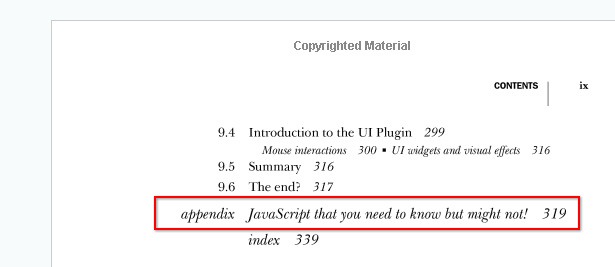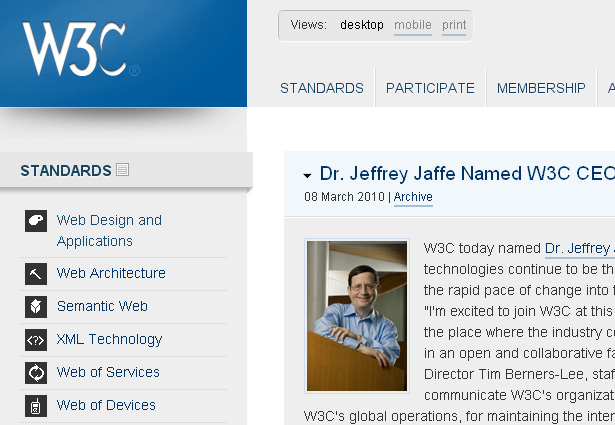 There is endless content available in the world of web design blogging telling us how to do things right, and how to succeed at our chosen profession.
There is endless content available in the world of web design blogging telling us how to do things right, and how to succeed at our chosen profession.
That's obviously a good thing, and it will certainly continue that way. But once in a while we need reminders on the things we do (or fail to do) that are negative.
That is, things that can have a detrimental impact on our progress as designers and developers — despite that these things may be temporarily helping us pay the bills and keep us afloat financially.
We all need to analyze our situation and assess whether or not we're forming healthy design and coding habits, and whether those habits could be providing short-term gains that are not conducive to long-term success.
So, take this information with a grain of salt (because I know some of it is highly debatable) and consider whether or not you personally are doing anything that could prevent you from having a job in five years.
You Have No Intention of Ever Turning Down a Client
This is definitely one of those symptoms that not everyone understands at first. Some might even view it as a good thing. After all, every client you do work for puts money in your pocket, gives you more experience, and increases the size of your portfolio. But not every client project turns out that way.
I've worked on projects that I don't want anyone to know about, because the client did what they wanted design-wise, and my advice on usability and best practices was mostly ignored.
Of course, we don't all have the luxury of choosing our clients like some really big agencies do. But we have to at least be able to understand for ourselves what type of client we might be averse to working with. There may be circumstances where we simply can't afford to turn a client down, so that's understandable. That's why this section addresses our motivations more than our actions (note the word "intention" in the sub-heading).
If we are able to identify some characteristics in clients or projects that we find undesirable, then it's likely we're making some progress as developers, and we're not so much concerned about making money but are primarily focused on making the web a better place.
You're the Proverbial "Jack of All Trades"
This is certainly one of the highly-debatable points I alluded to earlier. But consider this scenario: You're a web developer who does it all: You can create a logo in Illustrator, design a website mockup in Photoshop, are able to work with a slew of back-end frameworks, can program in multiple back-end languages, can code valid XHTML and CSS, can create raw JavaScript, have learned to play around with 3 or 4 JavaScript libraries, can do copy writing, content strategy, IA, UX, and even dabble in SEO and SEM.

Are you trying to do too many things as a web designer, and as a result failing to excel at any one of them?
How realistic is it that you'll be able to keep up to date and be on the cutting edge of all of those different technologies, concepts, and languages? It's not realistic at all, so it's best to pick a few areas that you can keep up with and focus on, and if a particular client requires other services beyond your focus, well, that brings us to the next item on this list.
You Don't Do Any Networking
One great way to ensure you're staying on the cutting edge and keeping up with standards and best practices is through networking, both online and in person.
Of course, some of us might be limited when it comes to personal networking, whether because of our location or some other factors. But we can all network and build relationships with quality developers online. Just keeping up with the blogs of some of the top developers in the world and joining in constructive discussions in the comments can help in this regard.

Successful networking can have a significant impact on your success as a web professional
Another fantastic way to make contacts and keep up with recent happenings in the community is to attend any events or conferences in your area. Many of these events are put on by some of the biggest names in the web design industry, and the information shared is always up to date and often ahead of the game.
Finally, besides the usual methods of networking done through various social networking sites, you could also offer to collaborate with some developers in the community on a web app, blog, or other website. Making connections in this way will help you focus on honing your skills in a few areas, while connecting with other developers and professionals who can do work in areas in which you aren't as strong.
As mentioned, this goes back to the previous point about avoiding wearing too many hats. If you have a solid network of available professionals, you likely won't need to be a "Jack of all trades" and can focus on becoming an expert in a few specific areas.
The only word of warning I would give when it comes to networking is to be prepared to give of yourself, and not just expect to gain from others. The only way an equal and long-lasting exchange can take place is if greed and selfishness is left behind and you're willing to be just as helpful to those from whom you expect help.
You Can't Justify Your Design Decisions
Everyone wants to be able to create beautiful websites that make an impression while at the same time serve a purpose and provide a usable and intuitive user experience. However, as designers we often try too hard in our efforts in this regard.
We may fall into the trap of imitation (which is fine, in general) but forget that all our design decisions should be based on careful analysis of a website's purpose, structure, audience, and content. I don't expect a designer to explain every pixel in a design (although I'm sure some designers can), but most major components in a design should have good justification.

Do the design elements in your portfolio make all your projects look overly similar to one another?
I find it interesting when I browse through the portfolio of a designer and see many similarities in their projects (and I'm sure people would see the same weaknesses in my own portfolio). But unless all your designs are for clients in the same niche industry, design patterns and elements should not be repeated too often across projects. If they are, this might be a symptom of laziness and lack of consideration for what should truly drive a design.
You're A jQuery Ninja, But Can't Code Raw JavaScript
The truth is, if you can't code raw JavaScript, then you're not a jQuery ninja; you just think you are.
I'm a firm believer that understanding a language from the ground up is the best way to really excel at it. Although developers and designers can accomplish great things with jQuery without knowing raw JavaScript, they can accomplish even greater things when they do know JavaScript.
A good book covering a JavaScript library will include sections discussing JavaScript concepts that should be understood in order to delve deeper into the library's capabilities.

The book "jQuery in Action" includes an appendix discussing some important JavaScript concepts that will make your jQuery skills that much better
You Never Think About Progressive Enhancement
If a tree falls in the forest, and there's no one there to hear it, does it make a sound? Even if it does, the sound is irrelevant, because it didn't serve a purpose.
This can happen with a website that isn't backwards compatible and lacks accessibility. This is where progressive enhancement comes in, and it needs to be considered during the planning stages, as it is more difficult (but not impossible) to implement in mid-project or after the fact.

Understanding the importance of progressive enhancement will make you a better web developer
Progressive enhancement (which is one of the key ingredients when implementing accessibility) ensures a website's content is SEO-friendly and is available to all site visitors, including those with older browsers, assisted technology, or those browsing the web with JavaScript and/or Ajax capabilities disabled. If your site's content is not accessible to search engine spiders, then it's like that tree that falls and nobody is there to hear it.
Accessible content will happen naturally on projects with limited use of client side enhancements, but it's especially important in Ajax-driven sites and applications, or sites that use JavaScript to access important content.
Thinking about progressive enhancement in your web projects is a sure sign that you're trying to maximize the reach of the site's content and, by extension, maximizing the site's ability to turn a sale or make conversions.
You Think "Specs" are Glasses
In no way am I implying here that web developers should know everything about the latest CSS and HTML specifications (i.e. "specs") or other admittedly mundane topics, but you should have at least a passing interest in some of the goings-on in the world of web standards, since these are what will shape the web of the future. It also can't hurt to be able to speak intelligently and practically on these topics in a job interview (or occasionally and tactfully in a client meeting).

Having some interest in the progress of web standards, while not the most exciting venture, is a necessary part of being a successful web developer
The majority of well-known web designers and developers are those who are known for being vocal about standards. Those same developers are the ones who have acquired book deals, have written ground-breaking articles on sites like A List Apart, and have gone on to speak at some of the biggest events and conferences in the world of web design.
Those designers and developers are who they are today because they unselfishly took the time to learn about and educate others on concepts and techniques that have contributed towards making the web a more accessible place. You can reach similar goals if you make it your aim to become educated on the progress being made in the world of web standards.
You're Preparing to Post a Comment on This Article to Explain Why I'm Wrong
I'm sure there are some debatable points made in this article, as I'm sure there are also some significant things I've neglected to mention. But before you decide these topics are of little importance to a "successful" web professional, take the time to consider what your goals are in building web sites, and where you see yourself in a few years.
I've had the unfortunate experience of working with and for people whose only interest in web design was business-related (that is, their goals were mostly financially-driven). Because of the potentially far-reaching effects of what we do as web professionals, our goals should go beyond such superficialities and we should be constantly assessing our personal values to ensure that our progress as web professionals is helping making the web a friendlier place.
Focusing on reaching such goals, and not always on "making the sale", is what will ultimately make you a successful web professional.
This post was written exclusively for Webdesigner Depot by Louis Lazaris, a freelance writer and web developer. Louis runs Impressive Webs, where he posts articles and tutorials on web design. You can follow Louis on Twitter or get in touch with him through his website.
Do you agree with these views? Why or why not? Please share below...

















